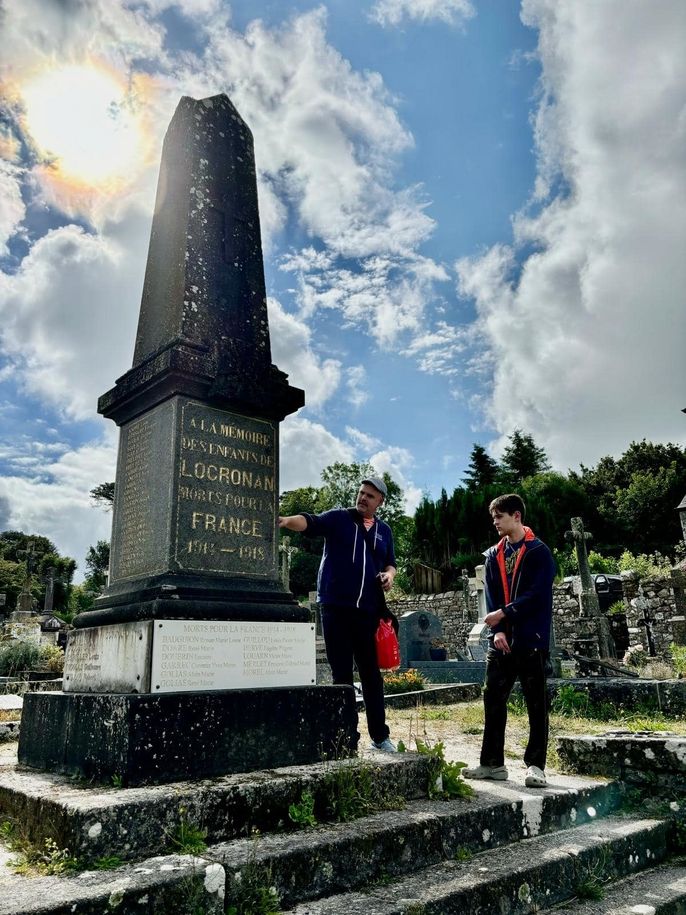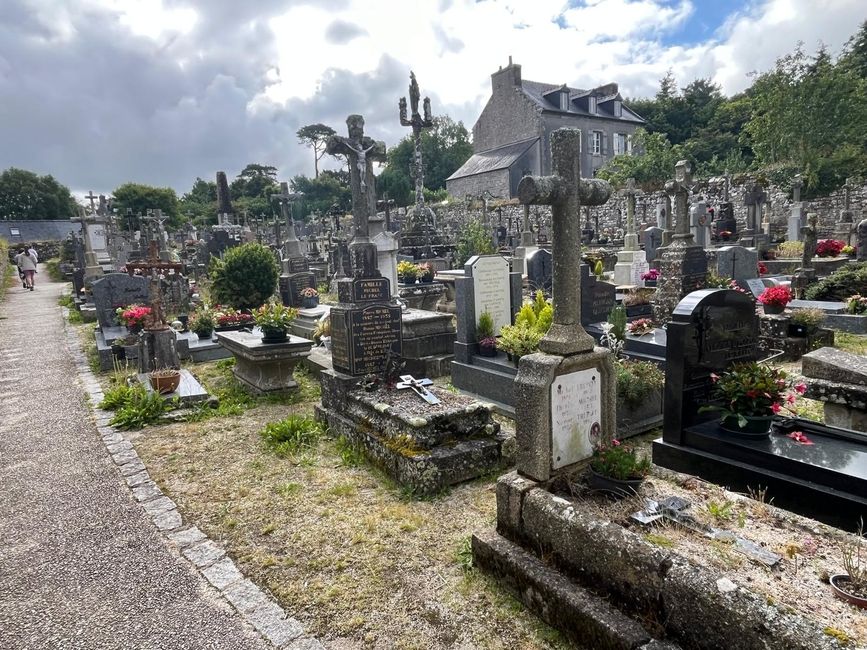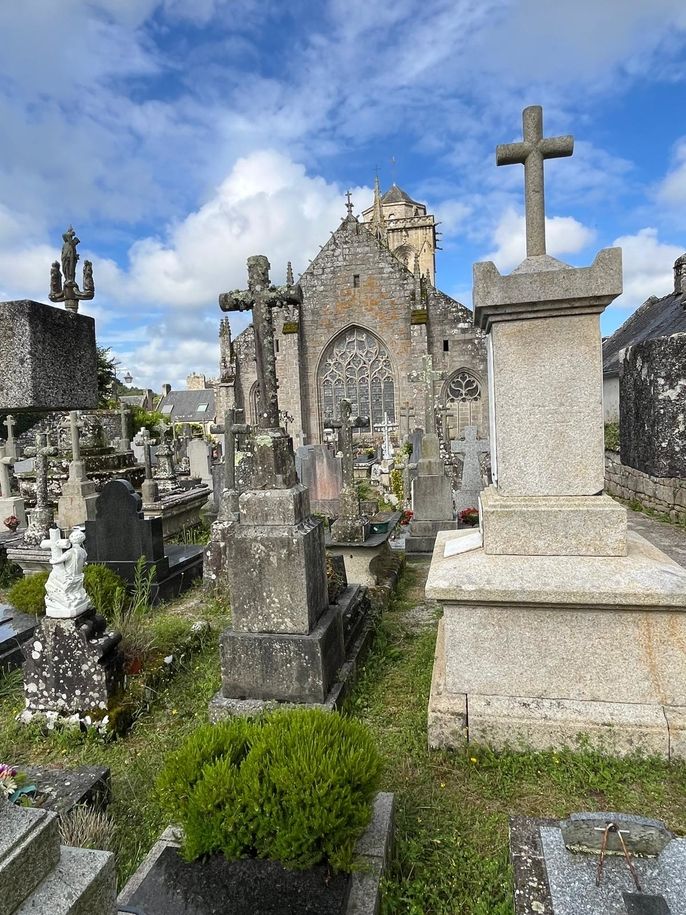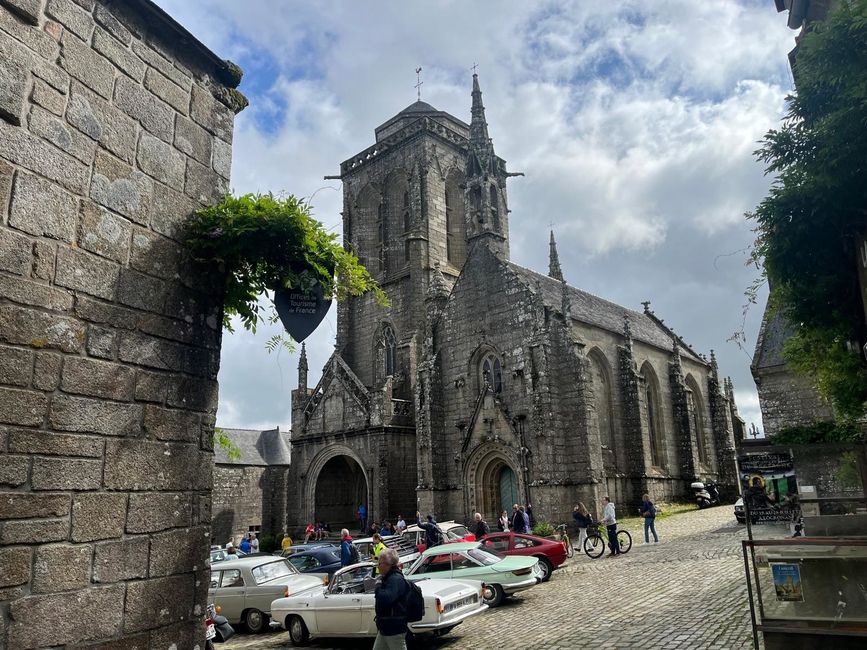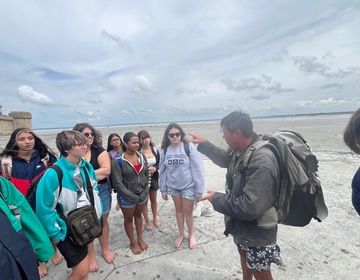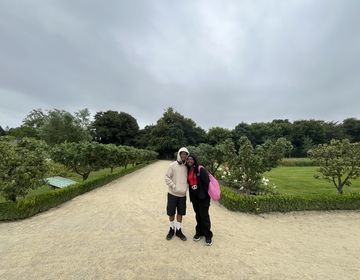The Scars of World War in France
A little quirk of mine when I travel to France is that I love to visit French cemeteries. And not just renowned cemeteries like Père-LaChaise in Paris where you can see the final resting places of famous people like Jim Morrison, Oscar Wilde, and Edith Piaf, but simple cemeteries in small towns where ordinary French folk lie in rest. It's a bit morbid, maybe, but I find the differences between French and American cemeteries to be incredibly fascinating. I love to walk up and down the paths in the cemetery, read the names and the dates of birth and death on the headstones, and imagine what their lives might have been like.
Given my own fascination with French cemeteries, I was happy to see some of our Language & Culture students visiting the cemetery behind the old cathedral in the middle of the picturesque village of Locronan on the Sunday morning of our weekend excursion through western Brittany. I invited those students over to see a monument located in the middle of the graveyard dedicated "aux enfants de Locronon morts pour la France" - to the children of Locronan who had died for France.' It was erected following the First World War (1914-1918) and was well over 100 years old. On the sides of the monument were engraved the names of Locronan soldiers who had died in the conflict, and years later, the village added a plaque to the back with the names of those who died in the Second World War (1939-1944).
Together with the students, we read through the names, and we noticed that time and time again we would see the same family name appear more than once. Sometimes twice, other times three times. We wondered if they had been brothers or maybe cousins. We imagined how devastating those deaths must have been not only for their own families, but for the whole village where everyone must have known everyone else. As we read through the names lost in World War II, we recognized family names that we had seen on the list from WWI. We wondered if perhaps these had been the sons of fathers killed twenty years earlier.
World War II ended in Europe eighty years ago. Most of the soldiers who fought in that war are now dead or in their final years. France has rebuilt, and countries that for centuries have been in conflict or at war with one another have reconciled have become faithful friends and strong allies with one another. But the scars of war still remain etched all throughout France. It's important that we pay attention to them and that we remember so that we might avoid such deadly conflicts in our own time.
Related Posts
Bon Voyage Banquet: One Last Bite Together
All students from Language and Culture, teachers, PL, and office staff enjoyed a final dinner together Thursday night. We had a large table waiting for us at Piccadilly located right... keep reading
Le Mont St. Michel: Climbing up into the Sky, and Sinking down into the Sand
Rennes L&C Students visit Mont St. Michel and explore the Bay that surrounds it.
Château et Parc Zoologique de la Bourbansais
Seeing a zoo in France is unlike any other. The zoo students went to see on Friday not only featured a variety of animals, but it also had a castle... keep reading
